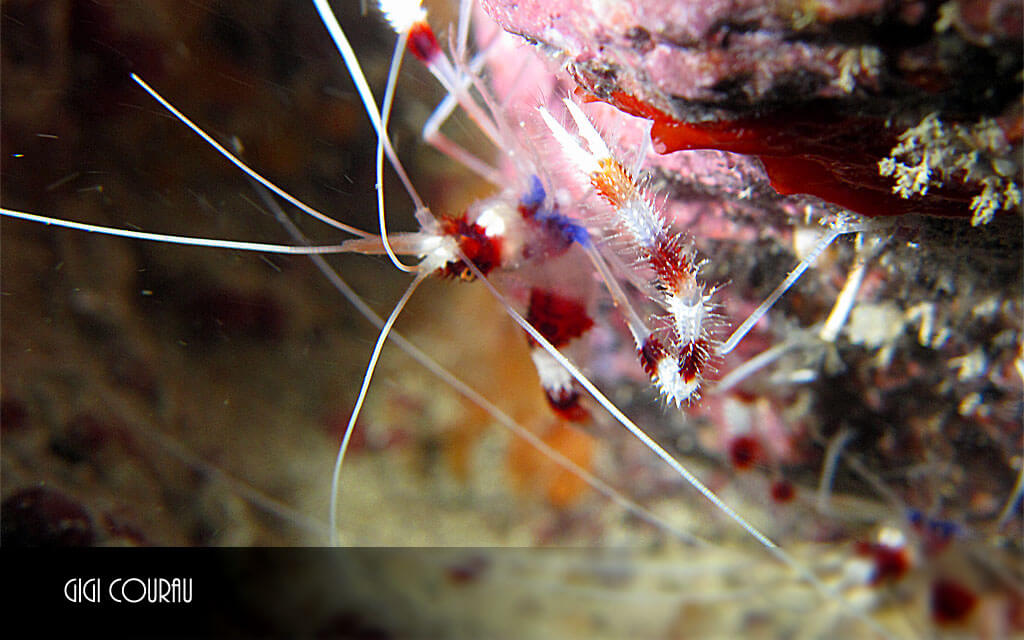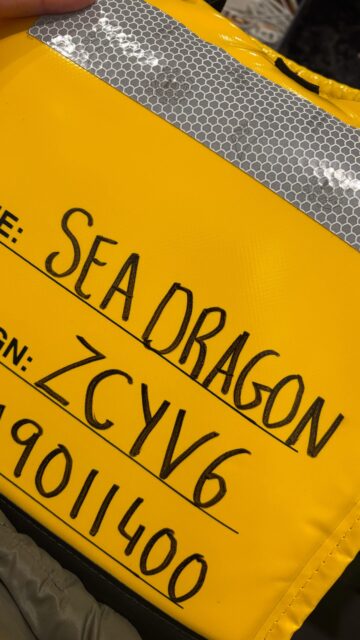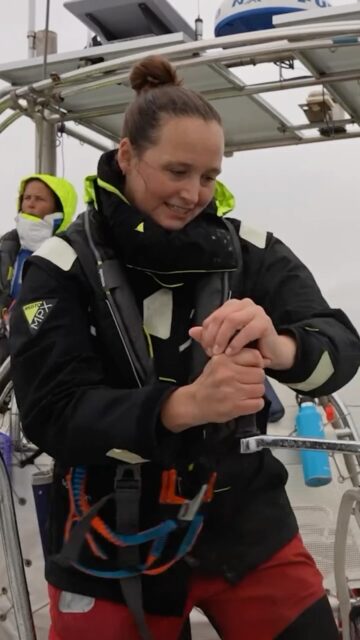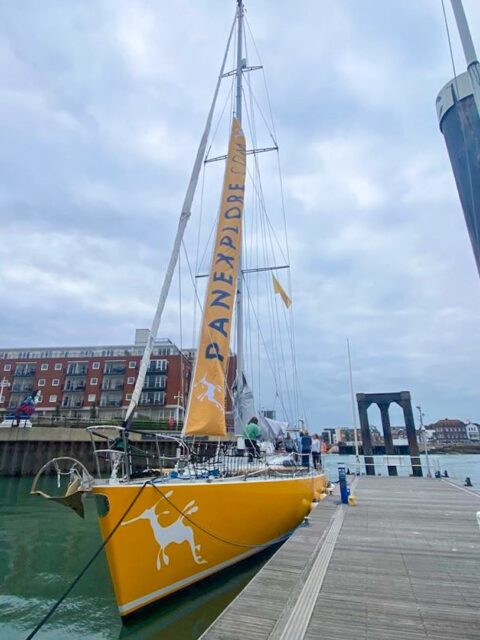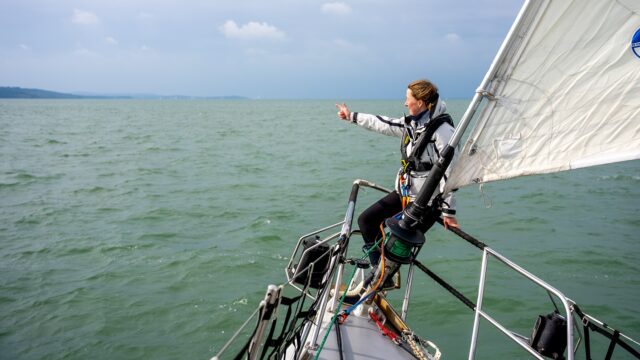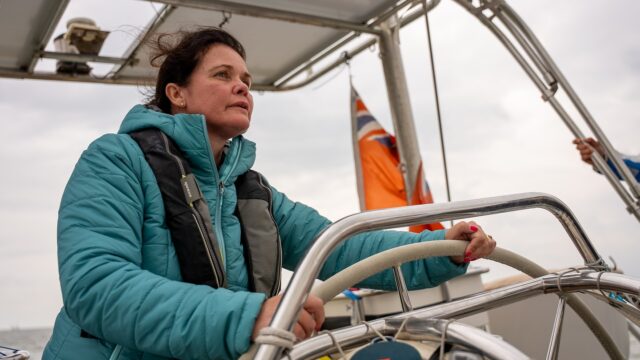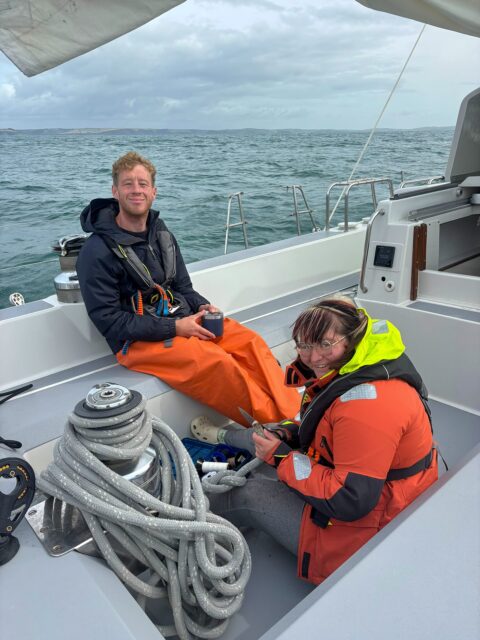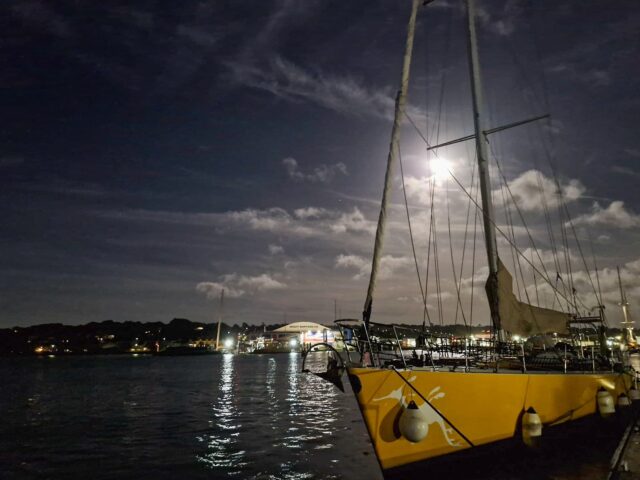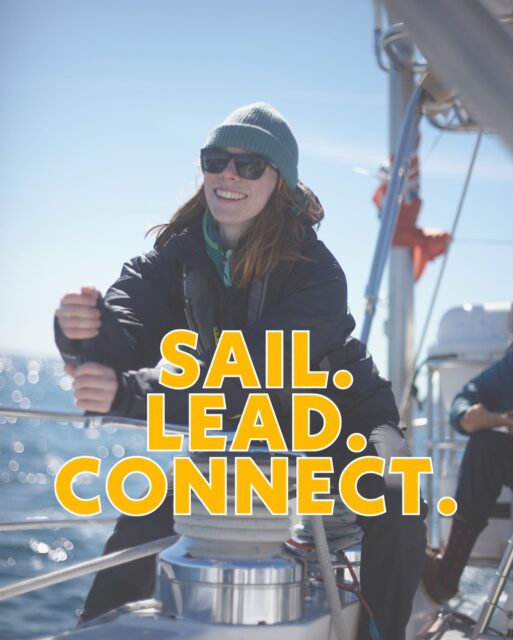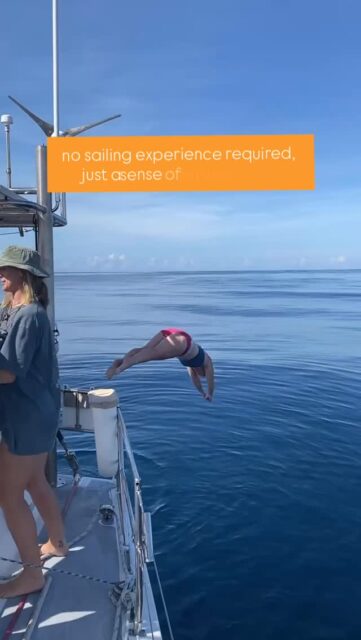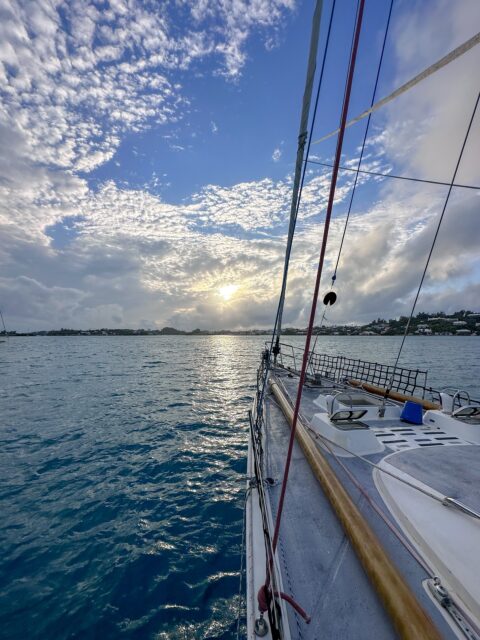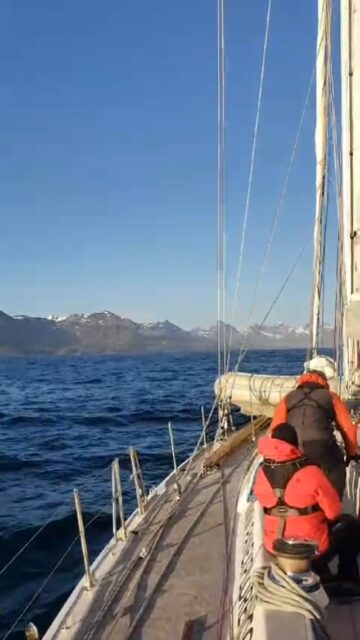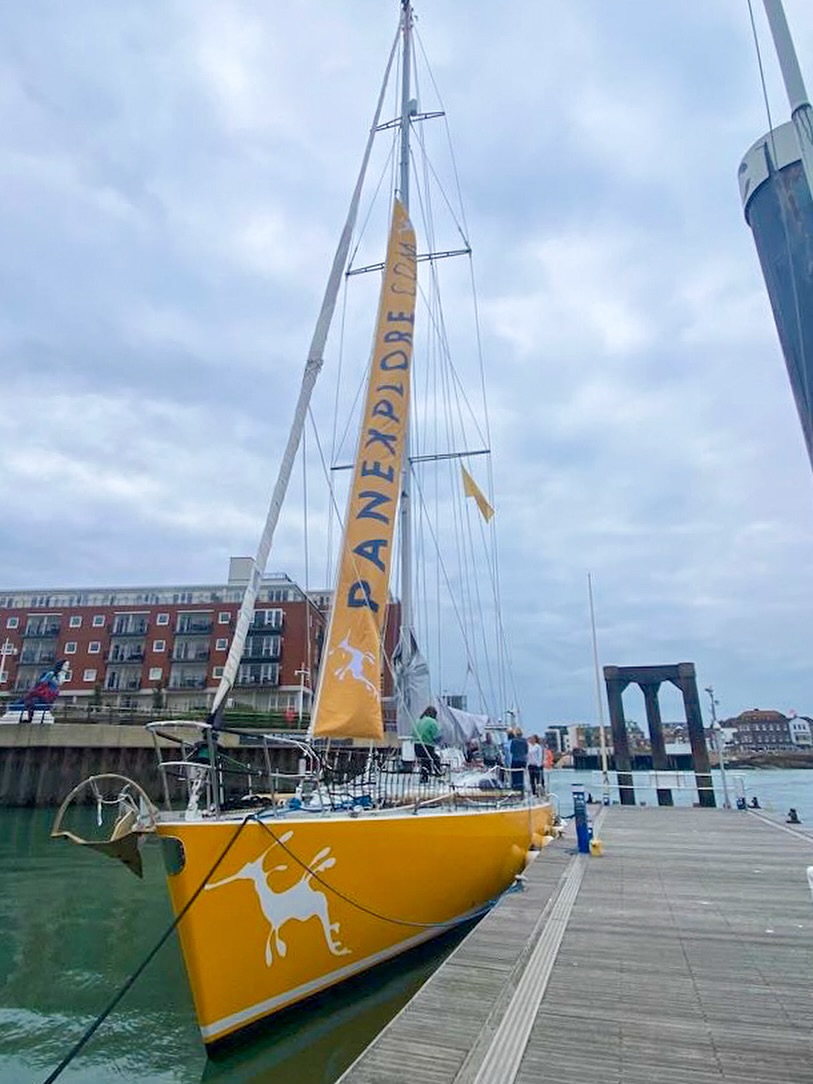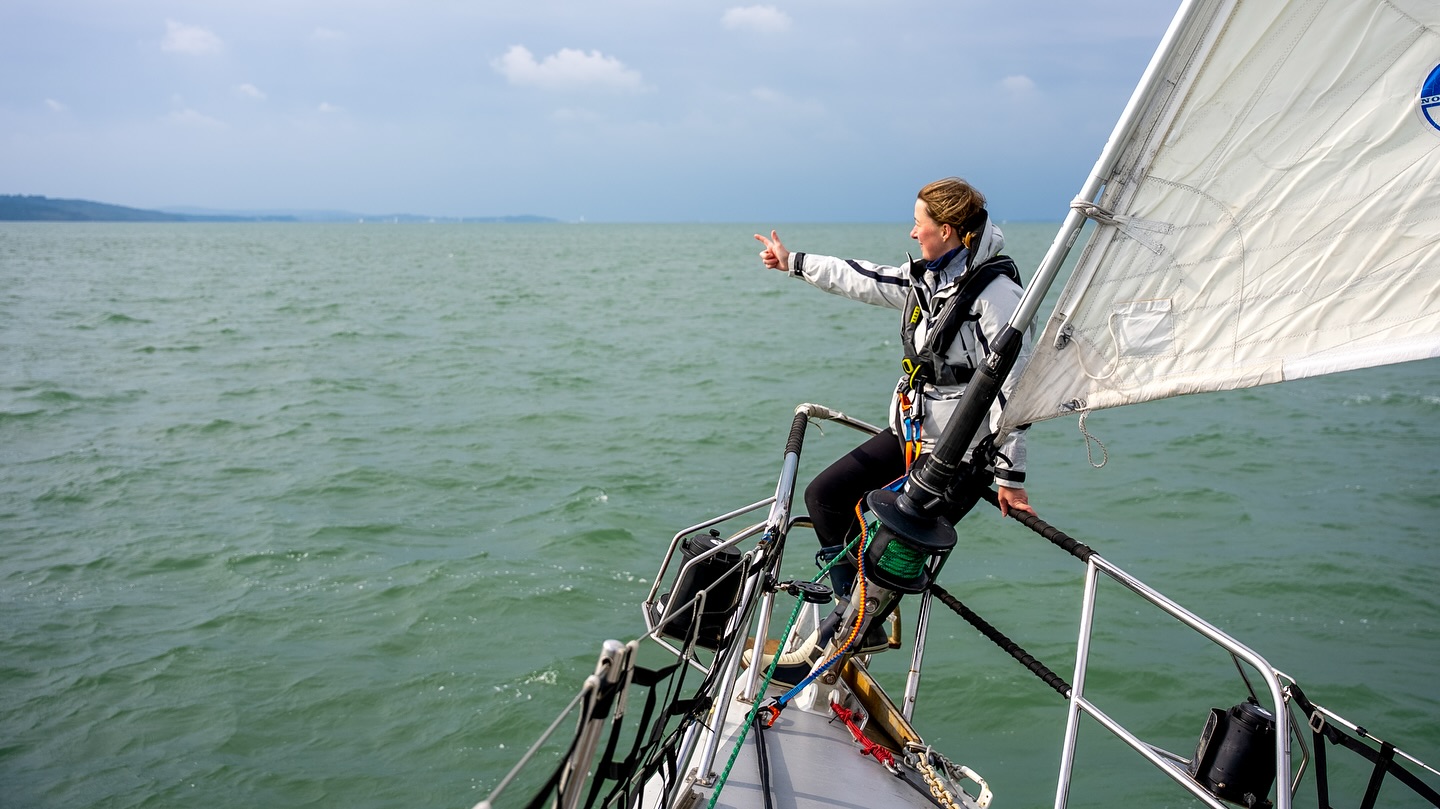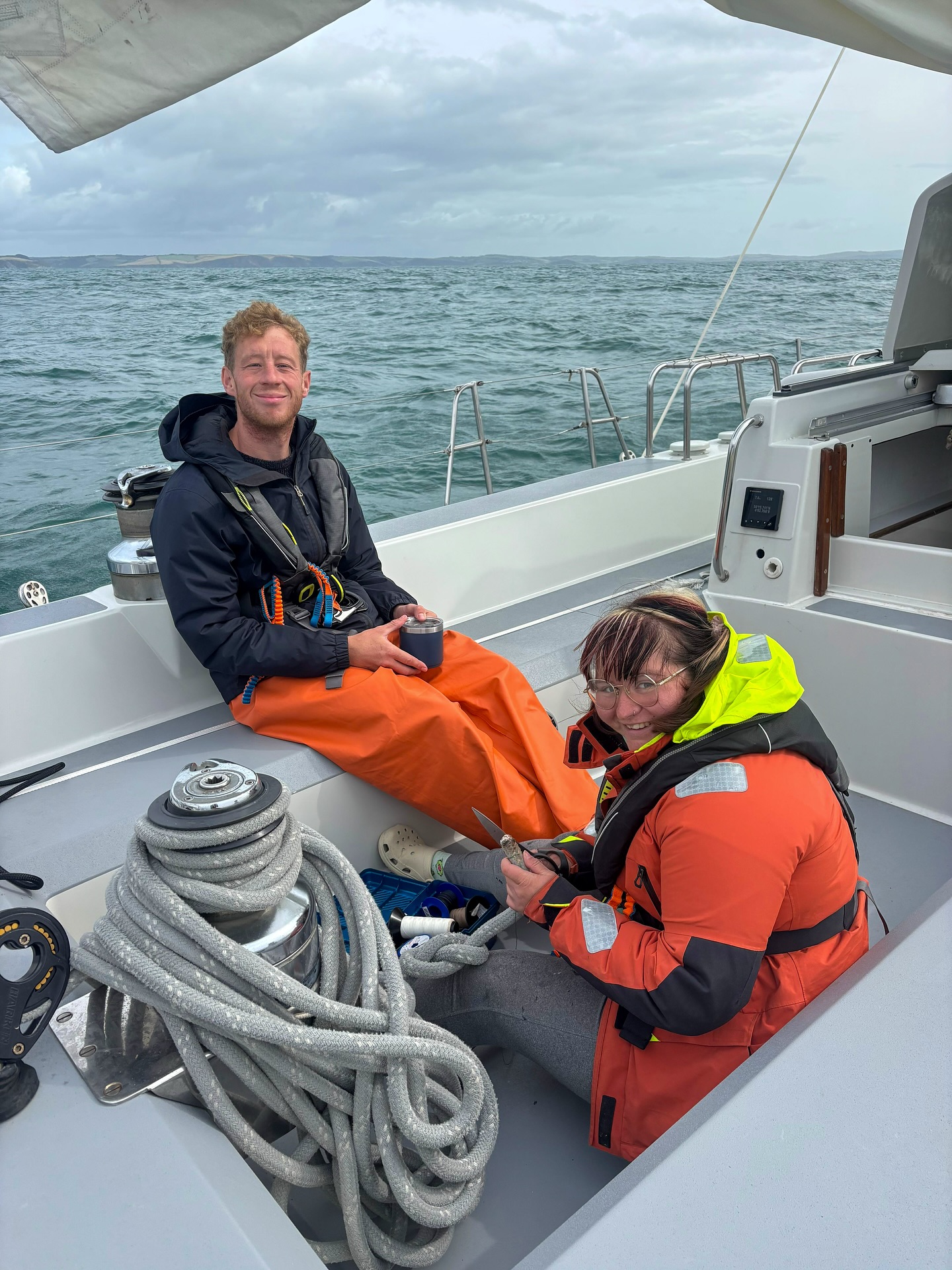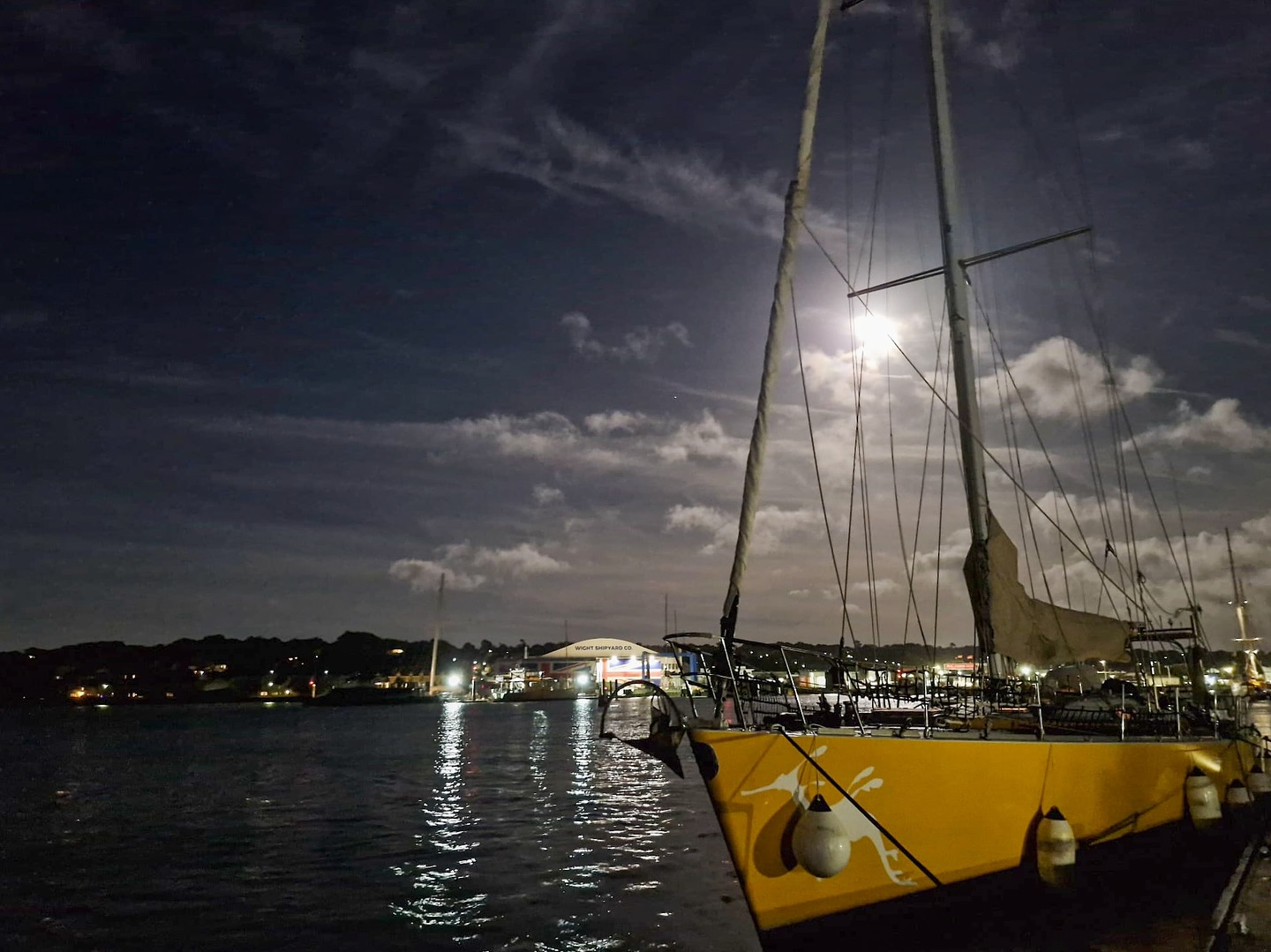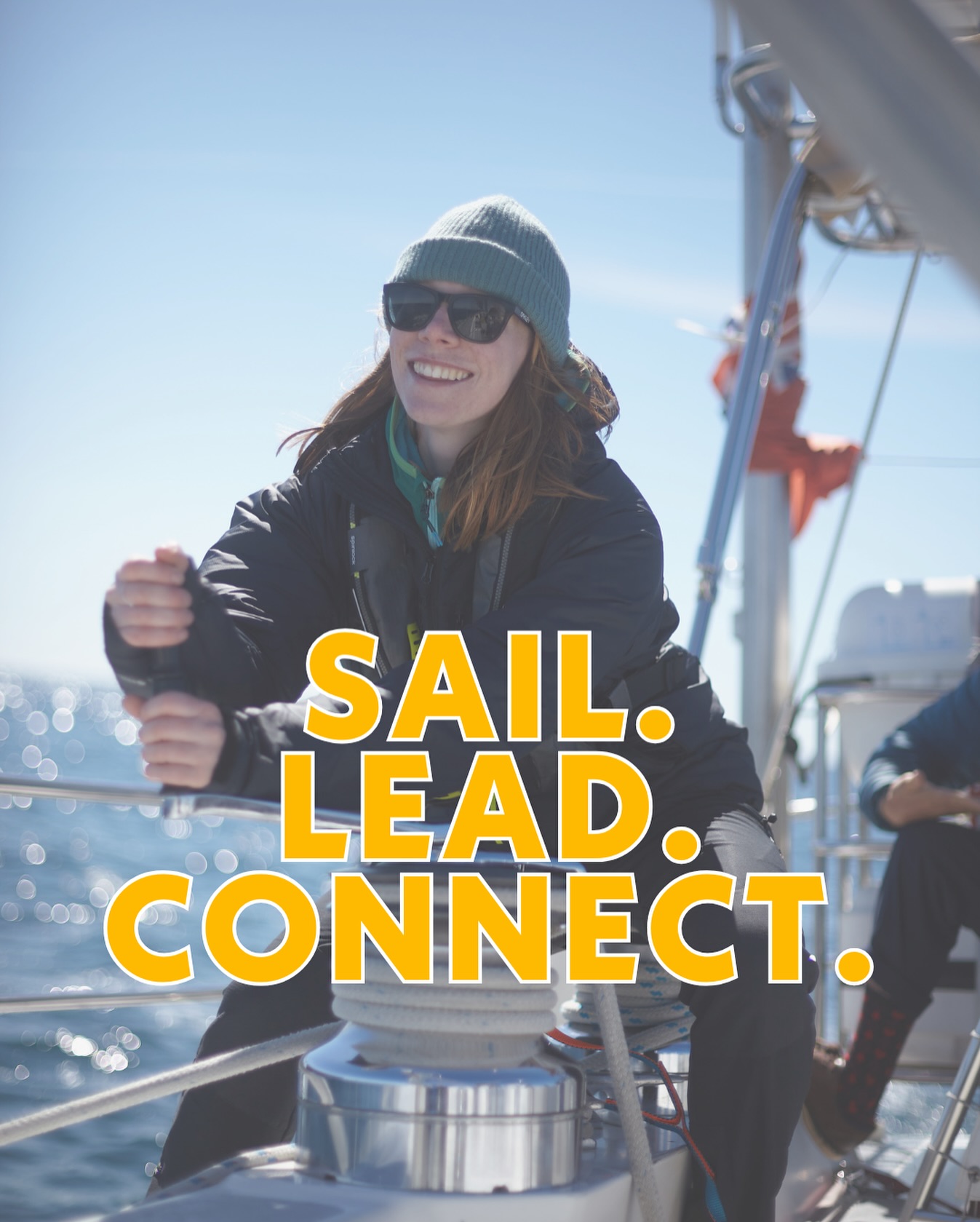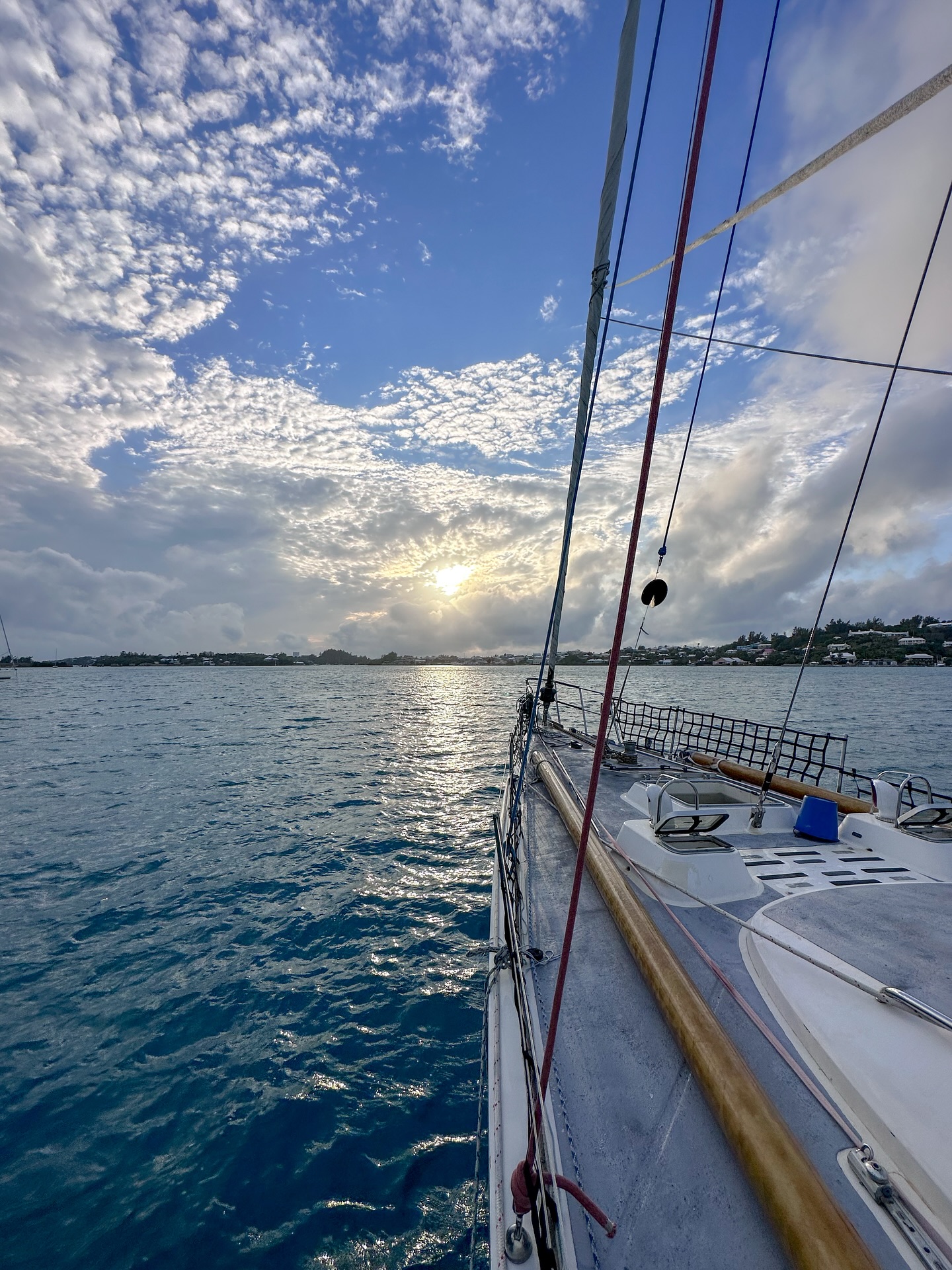by Gigi
I was so tempted to get into the water after 14 days sailing, I couldn’t wait any longer…We were finally anchored In Clarence Bay, Ascension Island, and getting wet was a must!
The following morning Dougal and myself were among the first up (of course Jordan was already awake fishing…) I looked around and I couldn’t believe my eyes, the water turquoise blue, and a school of “Blackfish” around the boat, I wanna to get in straight away, so Dale just woke up gave us the ok and we jumped into the warm, transparent and mysterious waters of Ascension Island!
I was amazed by the visibility – you could see clearly the anchor at 18m depth. So, we snorkelled around the boat with the Triggerfish for about 30 minutes, and of course I took my first shots to capture this moment. Soon Emilie, Bucky and Jordi joined us at the party. Dale and I dove later in the afternoon to check the dragging of the anchor and to mark the chain.
Next day 4 of us, this time Emilie, Jordi, Dale and I, went to dive at the English Bay. It is always a lot of time the previous and after diving, it took us more than 2 hs to fill the tanks with air, prepare the diving gear, cameras, flashlights, flag, and the dive plan, and get the dinghy ready to go…but, it was worth the 45 minutes exploring the underwater world in the middle of nowhere! In a remote tiny island, I felt like in a Jacques Cousteau expedition, in the “Calypso” discovering the South Atlantic seas! hehe…a dream made come true.
The underwater world in Ascension is as beautiful as above the water. Rocky black volcanic reefs, the lava created strange figures and caves, and the surroundings smooth yellows bright beaches with red, browns, and green hills in the background.
Unfortunately we didn’t see any turtles, or stingrays but a lot of colorful fish! that I’ll describe below:
The most common fish is “Blackfish” or “Black Durgon (Triggerfish family). What can I say, the word that comes to my mind is prolific! They were really everywhere! Nowhere else are its number so overwhelming as off Ascension. Although the Blackfish looks black, it is many shades of browns, blues and greens which shows up in the light. Also we saw a big Queen Triggerfish in the depths, beautifully colored and solitary.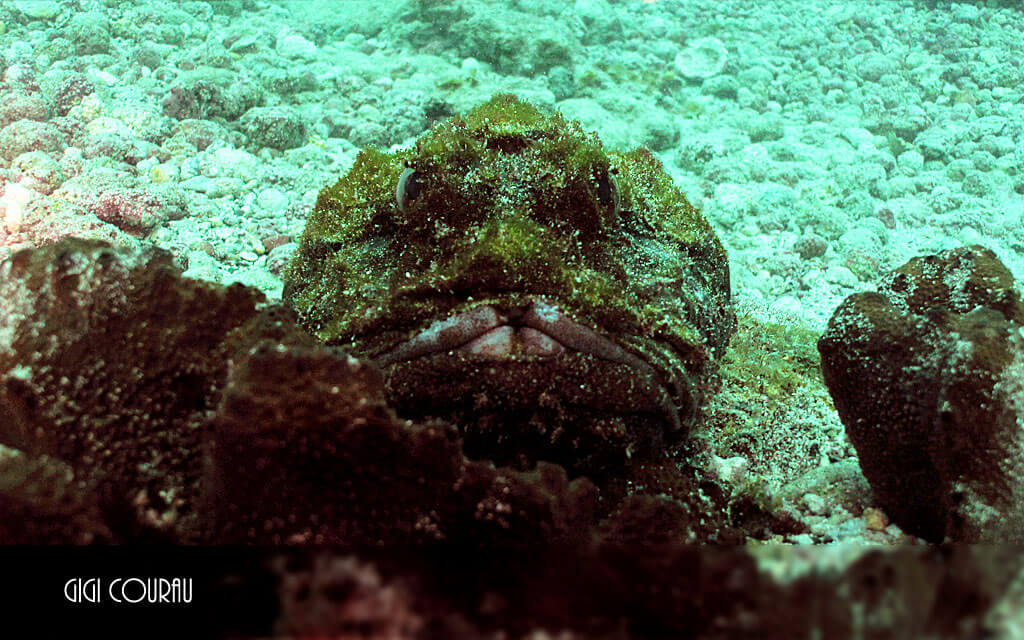
Ascension is rich in its variety of Eels and snake Eels, although the latter are rare. We saw big ones, and 4 different spp: Chain Moray or “Tiger Eel” , which the inside of its mouth is white, and then, the biggest fatty: Broadbanded Moray or “Banded Eel”; another is the Spotted Moray/ “Common Conger”, the most common moray eel, usually partly hidden in crevices but sometimes seen swimming free; and the Fangtooth Moray/ “Bird-eye Conger”.
We also found some funny and quick small fishes called “Blennies” and “Gobies” (size about 2- 3cm) found in rocky ledges and in rock pools.
A very abundant and particular fish from Ascension: Rock hind/ “The Jack” or Grouper (Epinephelus ascensionis) either sitting on rocks hoping you can not see him, or moving quickly and unobtrusively around rocks. The rock hind varies in size from small to quick large, the 3 black blotches on its back among all the spots being the distinguishing feature. Another endemic specie: the “Ascension Island Rock crab” often seen on the shore line, most of this crabs are black against the black rock. Some others are bigger and red white spotted.
The kings of camouflage: “Scorpionfish” ( Scorpaaena plumieri): the spotted scorpionfish is well camouflaged (see pic #2) merging with the rocks in shape and color. Often only the eyes and fins give it away! We were lucky enough to see it…and, near by, we also discovered a couple of lizardfish beautifully patterned in a green and white color matching with the seabed.
Almost in the end of the diving we found these incredible multicolored shrimp! Very specials! (look at the pics) they are sharing shelter with a big moray inside of this crevice and also offering a “cleaning service” to the eels teeth.
I’ll tell you something about my favorites world travellers: The Green Turtle (Chelonia mydas)
Female turtles come ashore at night to lay eggs on various Ascension Island beaches (same place where they were born), having travelled 1500 miles from Brazil! Transmitters have been attached to female turtles in attempt to understand their method of navigation from Brazil to this tiny island. This is amazing to me, same trip that we did sailing, they just swim -same distance- against the currents some times, and rolling over the waves and rocks to get to the coast. The courtship and mating take place in the water near the nesting beach and last several hours. After 6-10 weeks later the eggs begin to hatch. After their effort and been attacked from many predators in the coastal waters (including birds, crabs, sharks and other fish) they instinctively heading the water. The baby turtles swim non stop, against the waves, straight out to the safer open ocean for about 24hs. This is known as the “juvenile frenzy” it’s unclear how hatchlings survive in the first “lost years”, but hatchings of some species have been found in mats of seaweed floating far out in open ocean currents.
In the end, we happily saw a big male turtle at the pier when we were trying to get to the dinghy…
Other colorful fish seen during the diving: Angelfish, Damselfish, Squirrelfish, Soldierfish, Bulleye, Trumpetfish, Soapfish (who seam to produce a toxin if you touch it), Goatfish, Butterflyfish, Cardinalfish, Surgenfish. And also a lot of urchins, some sponges. and a lots of more!
This was a fantastic experience, now we are going to Fernando de Noronha, one of the best places in the world for diving!
I wanna say thank you everyone for sharing this incredible voyage and life experience! Special thanks to Dale, Emily and Ron to make it happen.
